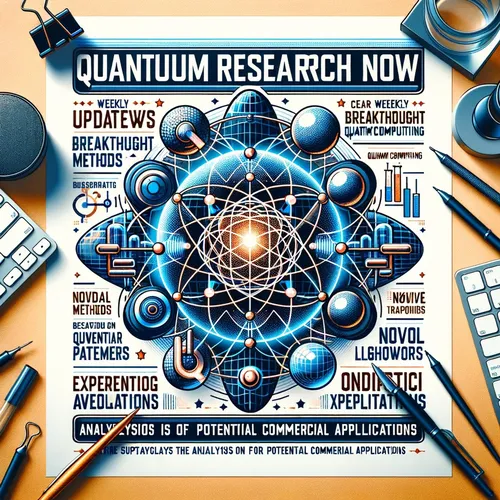Microsoft's Majorana Milestone: Quantum Computing's Topological Triumph
- Author
- Quiet. Please
- Published
- Thu 10 Apr 2025
- Episode Link
- https://www.spreaker.com/episode/microsoft-s-majorana-milestone-quantum-computing-s-topological-triumph--65527541
This is your Quantum Research Now podcast.
Greetings, quantum enthusiasts! It’s Leo here, your Learning Enhanced Operator, and I couldn’t be more thrilled to delve into the momentous quantum developments shaping our future. Today’s podcast comes to you at the crossroads of innovation and possibility, spotlighting a groundbreaking announcement that has just redefined the trajectory of quantum computing.
Let’s cut right to it: Microsoft has made headlines today with its groundbreaking quantum processor, Majorana 1. This achievement harnesses the power of topological qubits, marking a major leap toward scalable, fault-tolerant quantum computing. Trust me, this is no ordinary advancement—this is the type of progress that quantum researchers have been dreaming about for decades.
Picture this: quantum computing is often likened to navigating an impossibly complex labyrinth. Classical computers would painstakingly try every possible path, one by one. Now imagine if you could throw a single stone, and the ripples on the labyrinth’s surface revealed the correct path instantly. That, in essence, is the magic of quantum computing—and what Microsoft’s Majorana 1 has the potential to perfect. Let’s take a closer look at why this matters.
Microsoft’s breakthrough lies in its use of Majorana Zero Modes (MZMs), exotic quasiparticles that enable quantum states to remain stable in noisy environments. This stability addresses one of the field’s critical challenges: error rates. Traditional quantum computers rely on fragile qubits that require extensive error correction, making scalability a daunting puzzle. By leveraging topological superconductivity—think of it as building a highway that naturally guides cars without the need for constant steering—Microsoft’s topological qubits simplify error correction. This could turbocharge the development of large-scale quantum computers, allowing us to leap from research labs into transformative real-world applications.
The implications of this cannot be overstated. With scalable quantum systems, we’re looking at unlocking solutions in areas that classical supercomputers only dream of tackling. From designing new pharmaceuticals via molecular simulation to optimizing supply chains or accelerating climate research, the possibilities are vast. Think about it: a quantum computer could model every conceivable chemical reaction in a fraction of the time it takes a classical machine today. It’s like moving from sketching with a pencil to painting with an entire spectrum of color.
But that’s not all happening in the quantum sphere this week. Yale University has launched its Quantum Week, a celebration and exploration of everything quantum. One standout event is a deep dive into quantum error correction, a field closely tied to Microsoft’s work with Majorana qubits. Shraddha Singh, a Yale Ph.D. candidate, is defending her dissertation on hybrid quantum systems that combine the flexibility of qubits with the stability of oscillators, aiming to create machines resilient to the errors inherent in quantum computing. It’s inspiring to see such synergy between academia and industry, as both aim to solve the same fundamental challenges.
Let’s pause for a moment and dig deeper into what quantum error correction actually entails. Imagine you’re assembling a thousand-piece jigsaw puzzle, but every time you put down a piece, a gust of wind scatters others. Error correction is like creating a protective dome over your puzzle to ensure it stays intact. The methods being explored today, like those at Yale and Microsoft, are about making those protective domes more efficient, lightweight, and scalable.
As thrilling as these developments are, quantum computing isn’t without its controversies. Quantum Computing Inc. (QCI), once touted as a rising star in the field, is now facing a class-action lawsuit for allegedly overstating its...
